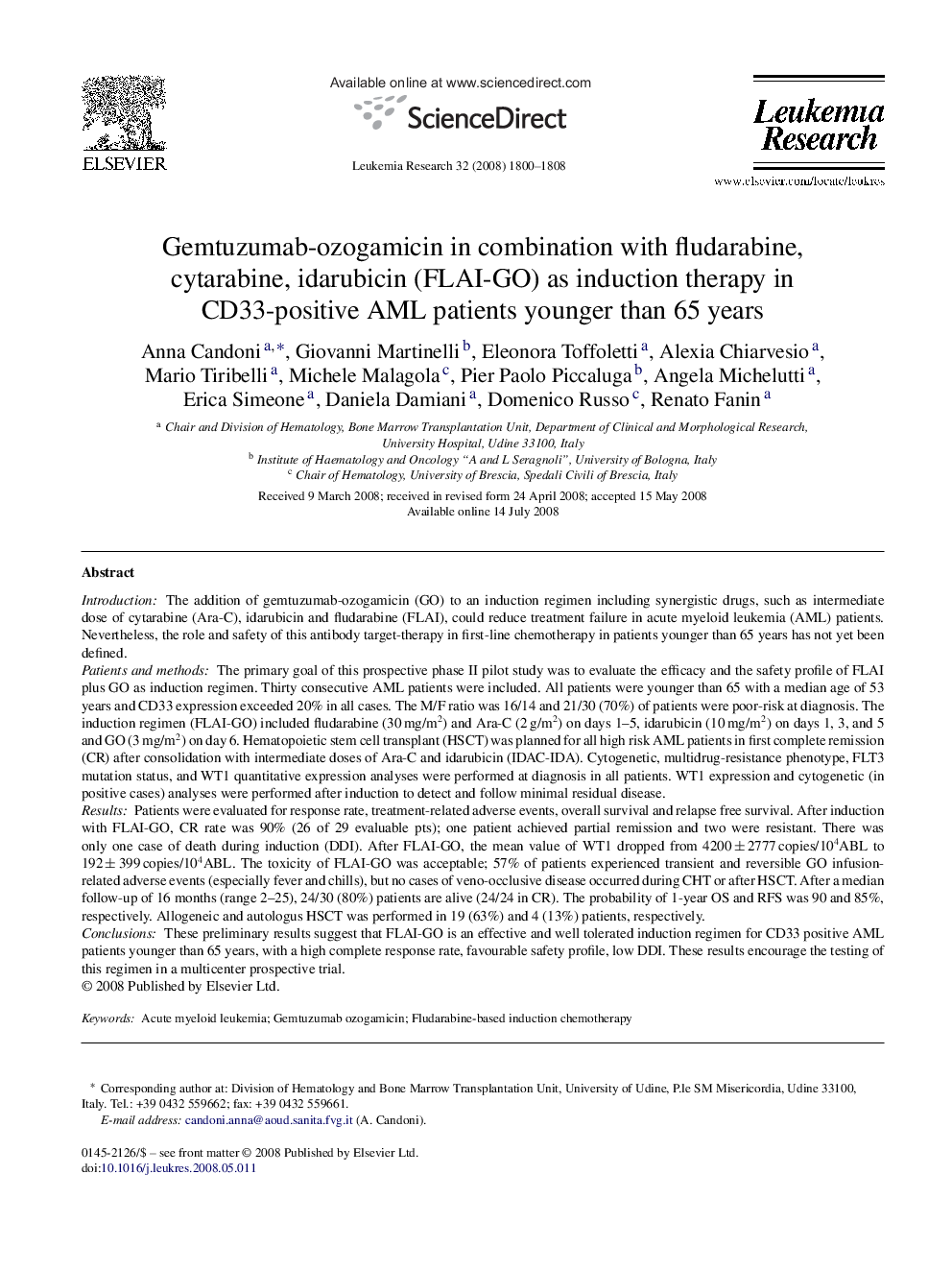| کد مقاله | کد نشریه | سال انتشار | مقاله انگلیسی | نسخه تمام متن |
|---|---|---|---|---|
| 2138832 | 1087887 | 2008 | 9 صفحه PDF | دانلود رایگان |

IntroductionThe addition of gemtuzumab-ozogamicin (GO) to an induction regimen including synergistic drugs, such as intermediate dose of cytarabine (Ara-C), idarubicin and fludarabine (FLAI), could reduce treatment failure in acute myeloid leukemia (AML) patients. Nevertheless, the role and safety of this antibody target-therapy in first-line chemotherapy in patients younger than 65 years has not yet been defined.Patients and methodsThe primary goal of this prospective phase II pilot study was to evaluate the efficacy and the safety profile of FLAI plus GO as induction regimen. Thirty consecutive AML patients were included. All patients were younger than 65 with a median age of 53 years and CD33 expression exceeded 20% in all cases. The M/F ratio was 16/14 and 21/30 (70%) of patients were poor-risk at diagnosis. The induction regimen (FLAI-GO) included fludarabine (30 mg/m2) and Ara-C (2 g/m2) on days 1–5, idarubicin (10 mg/m2) on days 1, 3, and 5 and GO (3 mg/m2) on day 6. Hematopoietic stem cell transplant (HSCT) was planned for all high risk AML patients in first complete remission (CR) after consolidation with intermediate doses of Ara-C and idarubicin (IDAC-IDA). Cytogenetic, multidrug-resistance phenotype, FLT3 mutation status, and WT1 quantitative expression analyses were performed at diagnosis in all patients. WT1 expression and cytogenetic (in positive cases) analyses were performed after induction to detect and follow minimal residual disease.ResultsPatients were evaluated for response rate, treatment-related adverse events, overall survival and relapse free survival. After induction with FLAI-GO, CR rate was 90% (26 of 29 evaluable pts); one patient achieved partial remission and two were resistant. There was only one case of death during induction (DDI). After FLAI-GO, the mean value of WT1 dropped from 4200 ± 2777 copies/104ABL to 192 ± 399 copies/104ABL. The toxicity of FLAI-GO was acceptable; 57% of patients experienced transient and reversible GO infusion-related adverse events (especially fever and chills), but no cases of veno-occlusive disease occurred during CHT or after HSCT. After a median follow-up of 16 months (range 2–25), 24/30 (80%) patients are alive (24/24 in CR). The probability of 1-year OS and RFS was 90 and 85%, respectively. Allogeneic and autologus HSCT was performed in 19 (63%) and 4 (13%) patients, respectively.ConclusionsThese preliminary results suggest that FLAI-GO is an effective and well tolerated induction regimen for CD33 positive AML patients younger than 65 years, with a high complete response rate, favourable safety profile, low DDI. These results encourage the testing of this regimen in a multicenter prospective trial.
Journal: Leukemia Research - Volume 32, Issue 12, December 2008, Pages 1800–1808